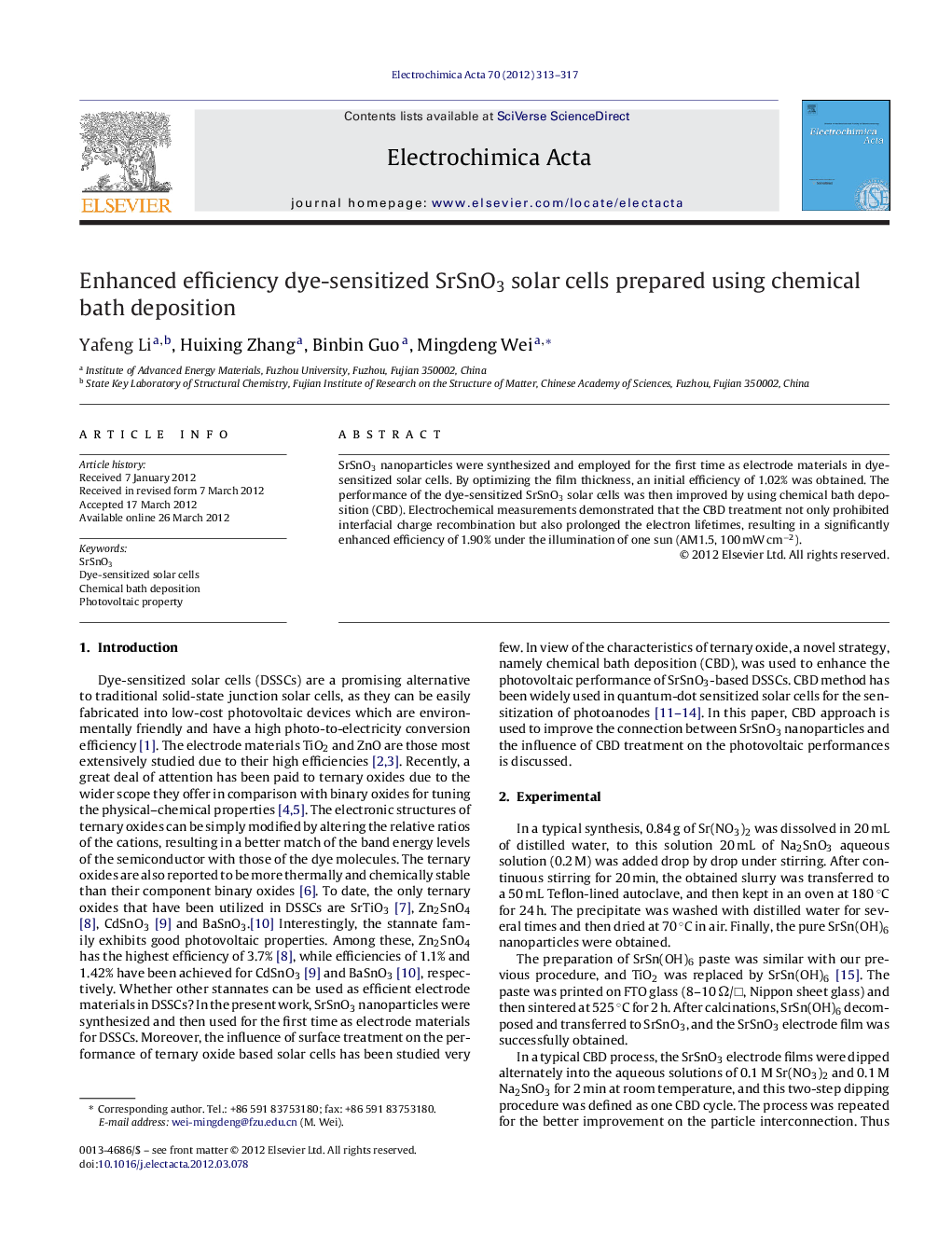| Article ID | Journal | Published Year | Pages | File Type |
|---|---|---|---|---|
| 188411 | Electrochimica Acta | 2012 | 5 Pages |
SrSnO3 nanoparticles were synthesized and employed for the first time as electrode materials in dye-sensitized solar cells. By optimizing the film thickness, an initial efficiency of 1.02% was obtained. The performance of the dye-sensitized SrSnO3 solar cells was then improved by using chemical bath deposition (CBD). Electrochemical measurements demonstrated that the CBD treatment not only prohibited interfacial charge recombination but also prolonged the electron lifetimes, resulting in a significantly enhanced efficiency of 1.90% under the illumination of one sun (AM1.5, 100 mW cm−2).
Graphical abstractFigure optionsDownload full-size imageDownload as PowerPoint slideHighlights► Ternary oxide SrSnO3 nanoparticles were employed for the first time as electrode materials in dye-sensitized solar cells. ► The strategy of chemical bath deposition was first proposed for enhancing photovoltaic performances of SrSnO3 based DSSCs. ► A significantly enhanced efficiency of 1.90% was obtained under the illumination of one sun.
